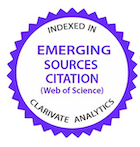Ocorrência de Rhipicephalus sanguineus em trabalhadores de clínicas veterinárias e canis, no município de Goiânia, Go
Resumo
Rhipicephalus sanguineus é um parasito natural de cães que eventualmente pode parasitar outros hospedeiros, entre eles o homem. Para humanos, este carrapato é vetor do agente da febre botonosa (Rickettsia conori) na Europa e vetor potencial no Brasil dos agentes da febre maculosa (Rickettsia rickettsii) e da borreliose Lyme símile (Borrelia sp.). Considerando a importância deste carrapato, desenvolveu-se este trabalho com o objetivo de avaliar a sua ocorrência em humanos no Brasil, uma vez que não se conhecem outros relatos. A presença de carrapatos foi avaliada em 46 trabalhadores de ambos os sexos (25 mulheres e21 homens), de oito clínicas e três canis, por meio de questionário e da identificação dos carrapatos encontrados. Do total de pessoas avaliadas, 68% das mulheres e 71% dos homens relataram já ter encontrado carrapatos andando ou fixados, após contato com cães. Foram colhidos três larvas, uma ninfa e quatro adultos (três machos e uma fêmea) sendo todos identificados como da espécie R. sanguineus. Desta forma este é o primeiro relato do parasitismo de humanos por este carrapato no Brasil. PALAVRAS-CHAVE: Carrapatos de cão, humanos, Brasil.Downloads
Não há dados estatísticos.
Downloads
Publicado
2006-10-31
Como Citar
LOULY, Carla Cristina Braz; FONSECA, Iracele Nogueira; OLIVEIRA, Vilma Ferreira de; BORGES, Lígia Miranda Ferreira. Ocorrência de Rhipicephalus sanguineus em trabalhadores de clínicas veterinárias e canis, no município de Goiânia, Go. Ciência Animal Brasileira / Brazilian Animal Science, Goiânia, v. 7, n. 1, p. 103–106, 2006. Disponível em: https://revistas.ufg.br/vet/article/view/381. Acesso em: 22 dez. 2025.
Edição
Seção
Nota Científica
Licença
Copyright (c) 2006 Ciência Animal Brasileira / Brazilian Animal Science

Este trabalho está licenciado sob uma licença Creative Commons Attribution 4.0 International License.
Autores que publicam nesta revista concordam com os seguintes termos:
- Autores mantém os direitos autorais e concedem à revista o direito de primeira publicação, com o trabalho simultaneamente licenciado sob a Licença Creative Commons Attribution que permite o compartilhamento do trabalho com reconhecimento da autoria e publicação inicial nesta revista.
- Autores têm autorização para assumir contratos adicionais separadamente, para distribuição não-exclusiva da versão do trabalho publicada nesta revista (ex.: publicar em repositório institucional ou como capítulo de livro), com reconhecimento de autoria e publicação inicial nesta revista.
- Autores têm permissão e são estimulados a publicar e distribuir seu trabalho online (ex.: em repositórios institucionais ou na sua página pessoal) a qualquer ponto antes ou durante o processo editorial, já que isso pode gerar alterações produtivas, bem como aumentar o impacto e a citação do trabalho publicado (Veja O Efeito do Acesso Livre).


























